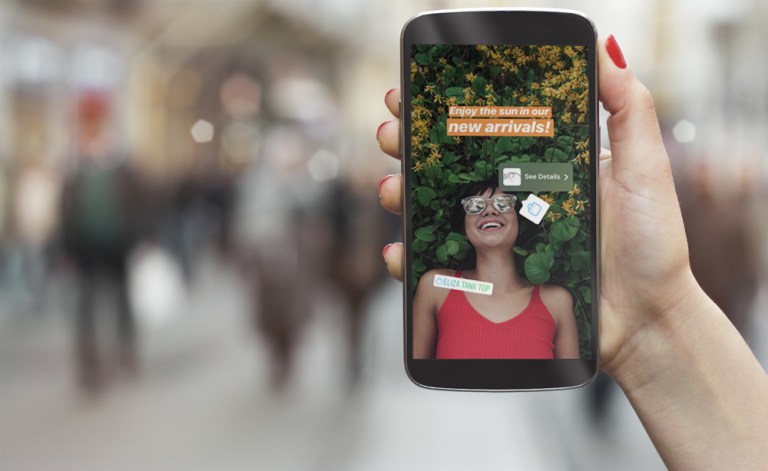
Context is everything, a truism that is becoming increasingly true when it comes to commerce in the digital age. Having what a customer wants is important (and probably always will be), but it’s important not to merely have the goods — one must be able to show them to the customer at the right moment.
That’s because consumers, according to The PYMNTS Contextual Commerce Report, like contextual commerce. A lot.
Though only 58 percent of consumers have tried contextual commerce, a full 84 percent report that they enjoyed it enough to want to do it again. In fact, the data shows that the more customers experience commerce in context, the more they like it and the more they spend. Among the “committed” category of contextual commerce shoppers (those who make more than 10 purchases a year through some contextual guiding), 82 percent report a positive experience.
Their spending is notable: More than 40 percent of committed shoppers report spending anywhere between $150 and $199 on their most recent purchases, while nearly half of regular shoppers spent between $200 and $499. The majority of both sets of consumer reported spending more than they might have otherwise because they were able to purchase in context.
Perhaps, unsurprisingly, social media platforms have grown into a major facilitator of contextual commerce opportunities — with 26 percent of consumers surveyed noting social media platforms as their sole channel for such commerce and 55 percent finding contextual opportunities both on and off social media. The enthusiasm is undeniable, which means the opportunity is big for the platforms most able to harness it — and turn it into increased conversions.
That is why Instagram has spent so much of the last year leveling up its capacities in this regard, according to Instagram’s Director of Business and Monetization Product Marketing Susan Rose.
Rose noted in a recent email exchange with PYMNTS, “[Instagrammers] watch stories to stay in the-know with brands they’re interested in, get an insider view of products they like and find out about new products that are relevant to them. Last year, we launched shopping on Instagram in the U.S. to take the sense of discovery on Instagram even further, by allowing businesses to tag products in their organic posts and people to shop from them.”
In the last few weeks, Instagram has moved to make the experience even smoother for the Instagram browser looking to become an Instagram shopper. The social media platform is now allowing users to stay safely within their Stories even while they buy things. The service is only in place for “select brands.” Adidas, Louis Vuitton, Aritzia, West Elm, Madewell and The Kooples are in the opening round of test retailers that now have the ability to include shopping bag icon stickers on images of products that will both provide users the ability to learn more about the product — and to purchase it in a click from the Instagram site.
Rose noted the latest upgrades is one Instagram has been making since launching its earliest shopping program. The goal, she noted, is to help brands drive awareness with the shopping tags so that interested consumers can easily access additional relevant information about products — while at the same time preserving the character of the “broader community” without disruption.
“Ultimately, we want to remove friction from all pieces of the shopping journey, and anywhere where people and businesses might engage on Instagram. Right now, we’re focused on how we can help make discovery and consideration easier on Instagram while taking into account the entire shopping journey,” Rose said.
She noted that is because, in the past, friction has been a notable stumbling block when it came to shopping on Instagram, as the entire transaction process really couldn’t be done from within the site. Users could start the commerce journey on Instagram — and do a lot of the legwork of discovery — but sealing the deal, even by Rose’s account, wasn’t an entirely smooth process.
“We saw that people wanted to learn more about the products they saw on Instagram, and businesses had to create ‘hacks’ to get them that information — either through using a link in their bio or through comments. That consumer experience was disjointed.”
Instagram doesn’t want their users wandering off-site to complete the transaction, and its customer didn’t really want to be redirected out of the activity they were already involved in. What the consumer wants, according to surveys Instagram undertook, was what one might expect customers in the age-contextual commerce to want — to be able to learn more and take action on Instagram right at the point when they found something they wished to purchase. In Instagram’s case, that is a lot of potential opportunities for commerce.
According to Rose, “about half of daily active people on Instagram in the U.S. are following an active shopping business.” Since around 300 million consumers use Stories on Instagram daily, that is a lot of potential eyeballs being connected to goods they can now click-and-buy at the moment they are most interested in them.
Today, the brands working within Stories tags is limited, though Instagram is committed to rolling out the tags to more of its business partners “soon.” Rose also hinted that, while these are the first capacities Instagram is offering around instant-contextual commerce capacities, they likely won’t be the last.
“This is the first iteration of shopping in Stories, and we’re really excited to see how people respond. We’ll be monitoring to ensure that the sticker is easy for people to engage with and easy for businesses to use. We know that our community wants to be able to learn more and take action on Instagram with businesses they follow, and we are committed to really building out as much function there as we can to meet that growing desire.”